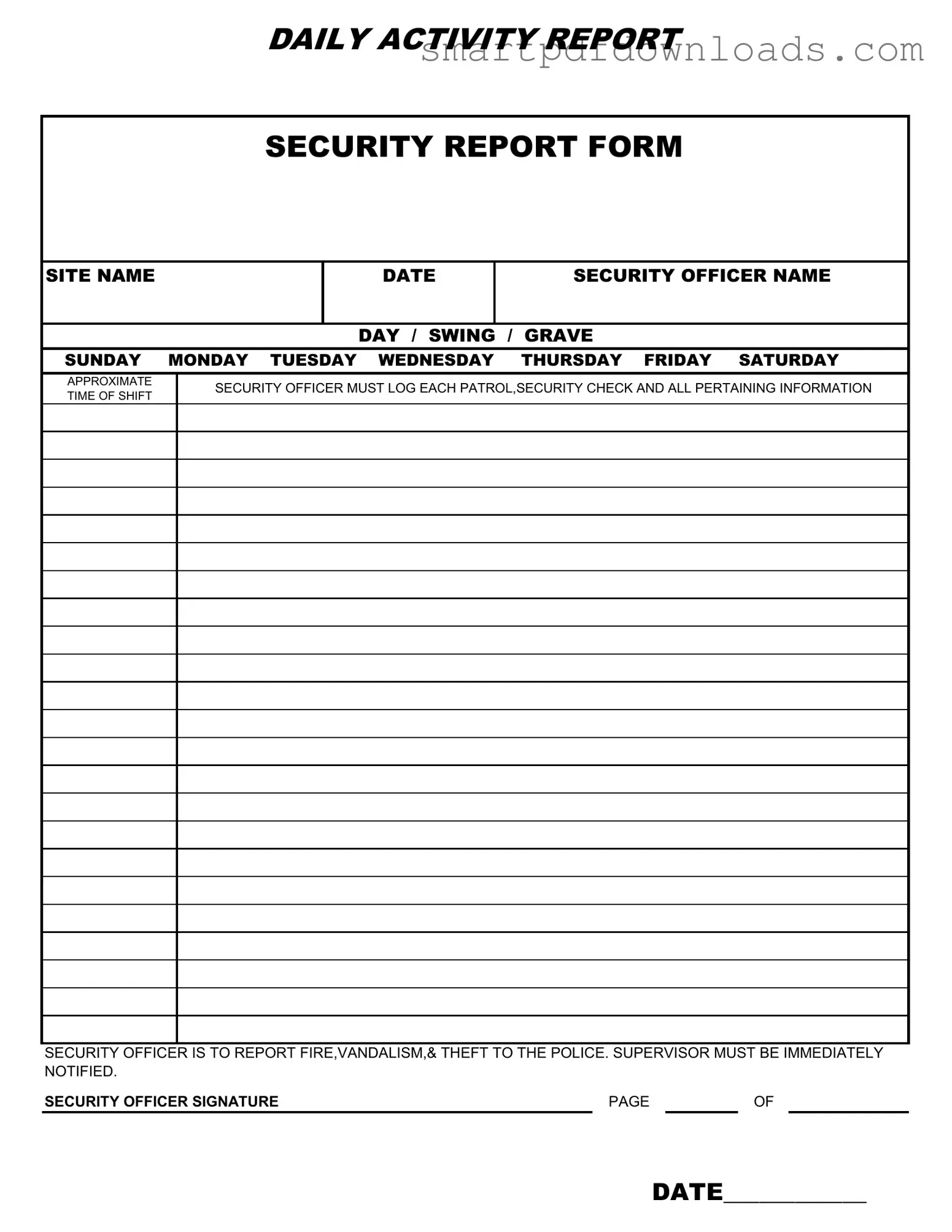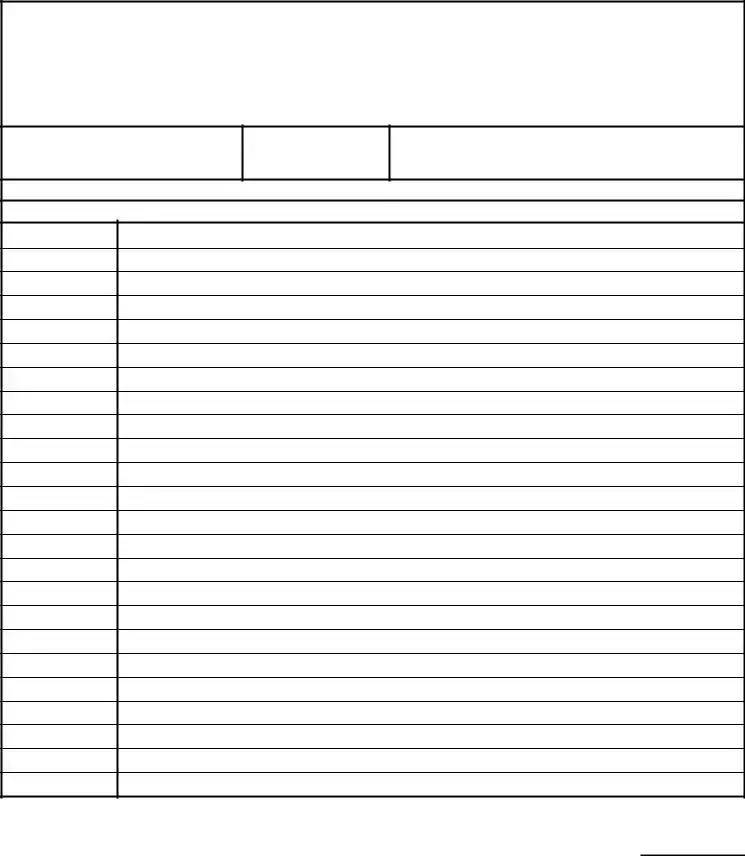Security Guard Daily Report Sample Form
The Security Guard Daily Report Sample form serves as a crucial tool for documenting the daily activities and observations of security personnel. This form includes essential information such as the site name, date, and the security officer's name, along with a log of patrols and security checks. It also outlines the officer's responsibilities in reporting incidents like fire, vandalism, and theft, ensuring that supervisors are promptly notified.
Edit Security Guard Daily Report Sample Online

